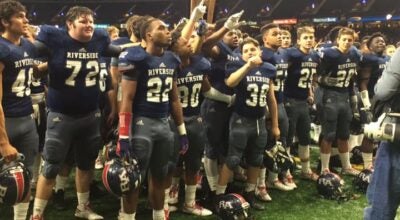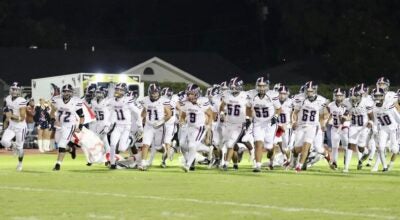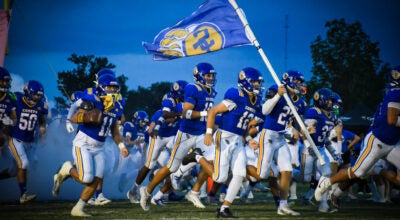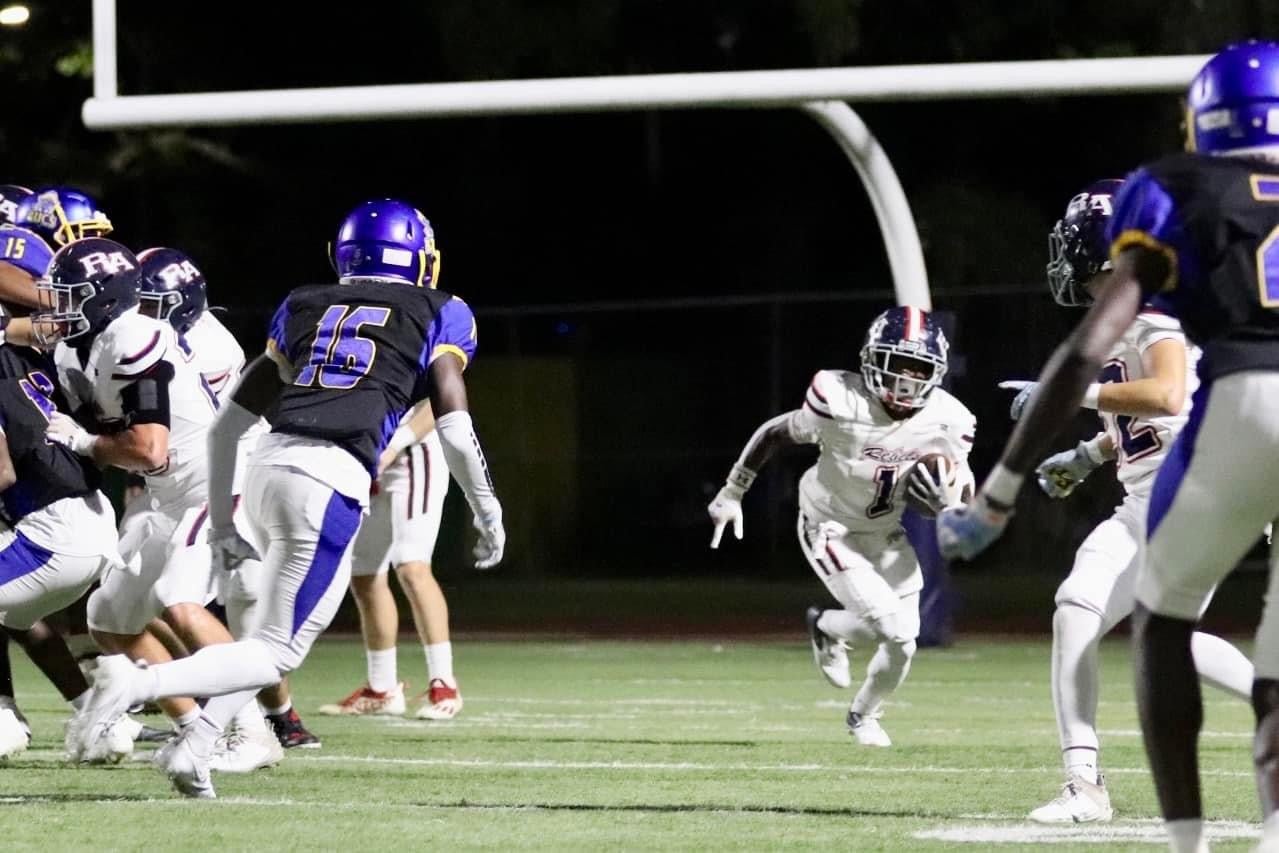CINEMATIC CATS
Published 12:00 am Tuesday, September 16, 2008
By RYAN ARENA
Sports Editor
Franklin Martin sat in front of the television, captivated, for days on end.
It was worse than he could have ever imagined. He felt compelled to take action – there was something, he felt, he had to do.
This Friday night, exactly what Franklin Martin has done will finally be on display for all to see, three years after Hurricane Katrina.
“Walking on Dead Fish”, Martin’s directorial debut, officially releases this Friday at Elmwood Palace 20. The documentary is the post-Katrina story of the East St. John football team, and the trials and tribulations of its players throughout the abbreviated 2005 season.
No, East St. John wasn’t displaced by flooding – instead, 450 displaced students flooded in, including 20 new football players to be integrated into a new school, a new system, and a new life.
Former multi-time Super Bowl winning quarterback and Louisiana native Terry Bradshaw, an executive producer of the film, narrates the documentary.
Martin says he read “hundreds” of articles about the storm and the havoc it created, searching for the inspiration for his future film. While attending a charity event in New York (for his friend’s younger brother, who was killed in 9/11) he came across one such story on the Tulane University football team. The Wave would be displaced all season, forced to play on the road.
He approached Tulane with the idea. After “a subway ride, two buses, three flights, and a long drive”, he’d meet with Tulane representatives. But even after all of that, it would not materialize. It wouldn’t be his story.
“It didn’t feel right,” said Martin.
So how, then, did Martin come to find his inspiration at East St. John?
“I read an article in USA Today about how Hahnville and East St. John were getting ready to play. They were ready to go, but didn’t even have enough equipment. It was a great article.
“I called (East St. John Coach Larry Dauterive), and I didn’t get an answer. He called back and asked me to stop there, first. Once I mean Coach Doe, I knew he was special. And that this place was really special.”
The project turned into more than the coach ever would have imagined.
“He called me out of the blue. We had never met before,” Dauterive said. “I thought he might stay three days, max. He stayed with us the entire season.
“Really, he was relentless. You couldn’t shoo him away. He had a vision for this thing. It’s really a beautiful story.”
Martin lived in Metairie as a child. His family was displaced by Hurricane Betsy.
“I didn’t know it at the time,” he says, “but it’s one of the things that originally drove me to do this.”
The film focuses less on football itself, and more on the original and displaced players learning how to live with one another, play together, and become one as a team – even as different racial, religious, and economic backgrounds separate them.
One key story point is the impact of Brother Martin-transfer Johnny Owen, a star running back who would go on to start over team captain and incumbent running back Stanley Jackson. How the move would impact the life of each, and how the two would interact, is one of the main plot points that develops over the film.
“It’s something that goes beyond football,” Martin says. “This isn’t a story like ‘When the Levees Broke,’ which was more political. This is a first hand look through the eyes of these kids, what they had to do to overcome this adversity.
“What about the girl that has to leave her school before her senior year, and loses a chance to be prom queen? You’re a senior, and all of a sudden you go where nobody knows you. Or the standout football player that all of a sudden has no starting position.”
Says Dauterive: “These kids were all stars in their own right at their previous schools. They come in the week of the first game, and really have no time to learn our system.”
Martin says that as the project began, players were hesitant to open up.
“They tended to give the answer they thought you wanted to hear,” he said.
But as time went on, and the students got to know Martin, many wanted to get their stories out.
“They started to say what they felt. They wanted to convey what they were going through,” said Martin.
In some ways, he feels the film has already made a mark, if only an ironic one so far. The documentary about a hurricane displacing so many had its own opening night displaced – by a hurricane. In this case, it was Hurricane Gustav.
“It was supposed to release on Sept. 5,” said Martin. “We’re releasing a hurricane movie, and we have to evacuate. A documentary about a hurricane, and another hurricane kicks us out. That might be film history, right there.”
Martin has high hopes for this weekend. He calls it a proving ground – how the film does this weekend will determine if it will continue to show in the theater in the weeks to come, and perhaps lead to a wide release.
“We have to prove ourselves,” said Martin. “If someone is interested in seeing it, this is the weekend to go. It’s just the way it is; some don’t believe people will support small films. They assume people only want to see things like Batman.”
Today, you can find Martin living in an R.V. behind the East St. John fieldhouse, where he has been for the past two weeks – it’s his way of showing symbolic support for those who lived in a similar fashion through the hurricane.
And when he finally drives that R.V. away, he hopes it’s with the knowledge that many more will be able to see his story in the weeks to come.
“It’s uplifting and it’s fun,” he said. “It’s about beating Katrina, not Katrina beating us.
“I think these kids send a great message. They actually show adults how we can live together, learn to tolerate our differences, and celebrate our similarities.”






